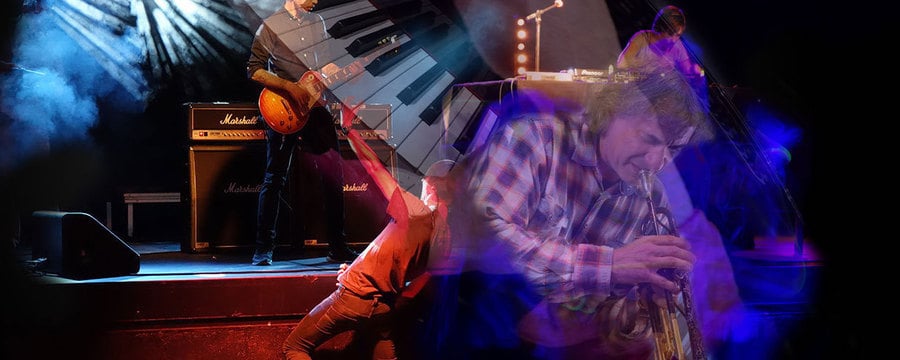What Is Groove in Musicology?
In this article we will explore the term groove – as a noun and as a verb.
As a noun, groove generally indicates a certain part of an overall musical sound, mix, or arrangement. Allan Moore places the groove in what is “laid down by the bass and drum kit” (2001:34). This is not a definition, but it does reveal a common point of view about the most relevant instruments.
Vijay Iyer suggests that the groove
might be described (but not defined) as an isochronous pulse that is established collectively by an interlocking composite of rhythmic entities (Iyer 1998).
A figure is not a groove unless it is designed to be repeated (2003:14).
Groove involves an emphasis on the process of music-making, rather than on syntax . . . The focus is less on coherence and the notes themselves, and more on spontaneity and how those notes are played (Iyer 1998).
MUSIC GROOVES
Swing is conceived as a quality of music performance, related to a process through which the musicians, both individually and in an interactive context of playing together, make a musical phrase – a rhythm or a melody – ‘come alive’ by creating a performance that in varying degrees involves playing ‘against’ a ‘fixed pulse’ (Waadeland 2001:23; emphasis in original).
When exposed to music that we perceive as swinging, we often want to tap our foot, clap our hands, move our body, or, perhaps, dance to the music. In this way we experience how swinging and “groovy” music initializes “energy” and generates movements in our body, thus, various body movements may be seen as a consequence of an experience of swing (loc. cit.; emphasis in original).
It is the little discrepancies within a jazz drummer’s beat, between bass and drums, between rhythm section and soloist, that create ‘swing’ and invite us to participate (Keil 1987:277).
Keil also argues that participatory discrepancies are present through the use of various types of sound production equipment and effects, including “space, echo, reverb, digital delay, double-tracking” (ibid.: 282). Such effects can introduce important dimensions to a track, but for groove-based popular music, entry points at precise positions, echo- or delay-effects that strengthen exact metrical subdivisions, and the absence of any reverb might be just as important.
“Groove” or “groovy” as a verb or an adjective/adverb is used to express a specific experience with music. The nature of these experiences may not be universal, but in line with Waadeland, one generalization is probably acceptable: the music grooves if body movements are activated by its rhythmic elements. How music is produced or played in order to activate movement varies according to specific cultural traditions to such an extent that the question becomes moot. The contributions of Keil, Iyer, and Waadeland, however profound, do not embrace all groove-based music. There are common features and similarities but also significant differences among the various genres. Why some people move to a certain type of music and others do not reflects the kinds of music to which they were previously exposed. Individual body movements and movement patterns are shaped according to the style of dance music in question, and familiar genres usually work better.
References
- Danielsen, Anne. 2006. Presence and Pleasure: The Funk Grooves of James Brown and Parliament. Middletown: Wesleyan University Press.
- Hawkins, Stan. 2001. Joy in Repetition: Structures, Idiolects, and Concepts of Repetition in Club Music. Studia Musicologica Norvegica 27: 53–78.
- Hughes, Timothy S. 2003. Groove and Flow: Six Analytical Essays on the Music of Stevie Wonder, Ph.D. Thesis, University of Washington.
- Iyer, Vijay. 1998. Microstructures of Feel, Macrostructures of Sound: Embodied Cognition in West African and African-American Musics. Ph.D. Thesis, University of California, Berkeley.
- Keil, Charles. 1987. Participatory Discrepancies and the Power of Music. Cultural Anthropology 2 (3): 275–283.
- Keil, Charles, and Steven Feld. 1994. Music Grooves: Essays and Dialogues. Chicago: University of Chicago Press.
- Moore, Allan F. 2001. Rock: The Primary Text: Developing a Musicology of Rock. 2nd ed. Ashgate.
- Waadeland, Carl Haakon. 2001. “It Don’t Mean a Thing If It Ain’t Got That Swing”: Simulating Expressive Timing by Modulated Movements. Journal of New Music Research 30 (1): 23–37.
Share this
Music Moves: Why Does Music Make You Move?


Reach your personal and professional goals
Unlock access to hundreds of expert online courses and degrees from top universities and educators to gain accredited qualifications and professional CV-building certificates.
Join over 18 million learners to launch, switch or build upon your career, all at your own pace, across a wide range of topic areas.
Register to receive updates
-
Create an account to receive our newsletter, course recommendations and promotions.
Register for free







